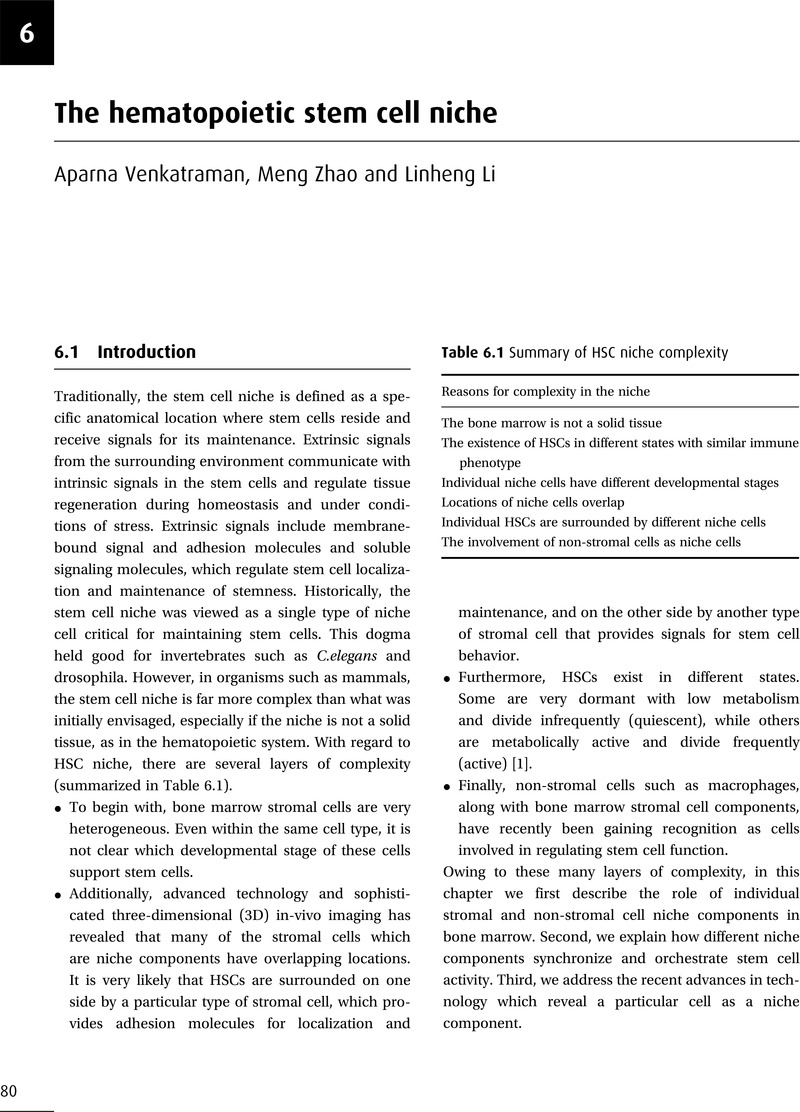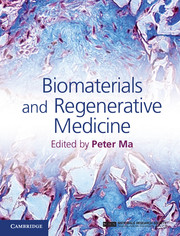Book contents
- Frontmatter
- Contents
- List of contributors
- Preface
- Part I Introduction to stem cells and regenerative medicine
- 1 Embryonic stem cells
- 2 Induced pluripotent stem cells
- 3 Connective tissue stem and progenitor cells
- 4 Hematopoietic stem cells and their niches
- 5 Using biomaterials for fetal stem cell isolation, expansion and directed-differentiation
- 6 The hematopoietic stem cell niche
- Part II Porous scaffolds for regenerative medicine
- Part III Hydrogel scaffolds for regenerative medicine
- Part IV Biological factor delivery
- Part V Animal models and clinical applications
- Index
- References
6 - The hematopoietic stem cell niche
from Part I - Introduction to stem cells and regenerative medicine
Published online by Cambridge University Press: 05 February 2015
- Frontmatter
- Contents
- List of contributors
- Preface
- Part I Introduction to stem cells and regenerative medicine
- 1 Embryonic stem cells
- 2 Induced pluripotent stem cells
- 3 Connective tissue stem and progenitor cells
- 4 Hematopoietic stem cells and their niches
- 5 Using biomaterials for fetal stem cell isolation, expansion and directed-differentiation
- 6 The hematopoietic stem cell niche
- Part II Porous scaffolds for regenerative medicine
- Part III Hydrogel scaffolds for regenerative medicine
- Part IV Biological factor delivery
- Part V Animal models and clinical applications
- Index
- References
Summary

- Type
- Chapter
- Information
- Biomaterials and Regenerative Medicine , pp. 80 - 88Publisher: Cambridge University PressPrint publication year: 2014



